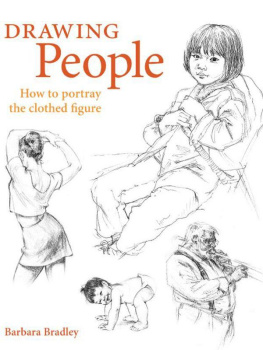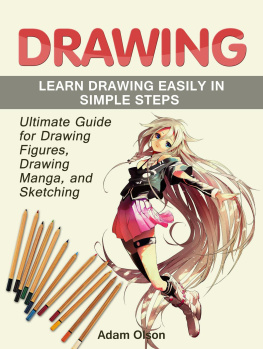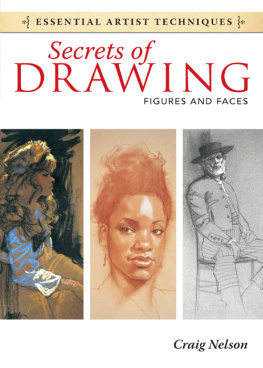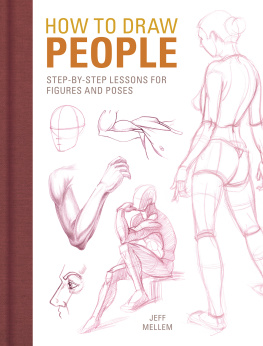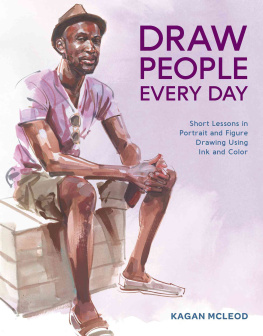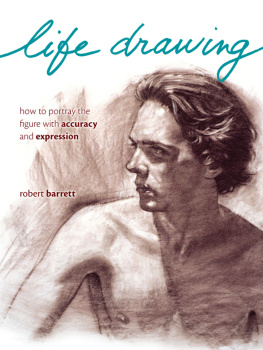DRAWING PEOPLE:
How to Portray the Clothed Figure

DRAWING
People
How to Portray
the Clothed Figure
Barbara Bradley

www.artistsnetwork.com
Drawing People: How to Portray the Clothed Figure. Copyright 2003 by Barbara Bradley. Manufactured in China. All rights reserved. No part of this book may be reproduced in any form or by any electronic or mechanical means including information storage and retrieval systems without permission in writing from the publisher, except by a reviewer who may quote brief passages in a review. Published by North Light Books, an imprint of F&W Publications, Inc., 4700 East Galbraith Road, Cincinnati, Ohio 45236. (800) 289-0963. First edition.
Other fine North Light Books are available from your local bookstore, art supply store or direct from the publisher.
07 06 05 04 03 5 4 3 2 1
Library of Congress Cataloging in Publication Data
Bradley, Barbara (Barbara L.)
Drawing people: how to portray the clothed figure / Barbara Bradley. 1st ed.
p. cm.
ISBN 1-58180-359-1 (hc. : alk. paper)
ISBN-13: 978-1-60061-510-8 (EPUB)
eISBN: 978-1-44031-726-2
1. Human figure in art. 2. Drapery in art. 3. Drawing-Technique. I. Title.
| NC765.B72 2003 |
| 743-4dc21 | 2003042043 |
Editors: Amanda Metcalf and Jennifer Kardux
Cover and interior designer: Wendy Dunning
Page designer: Kathy Gardner
Photographer: Eln Santiago
Production coordinator: Mark Griffin
METRIC CONVERSION CHART
| To convert | to | multiply by |
| Inches | Centimeters | 2.54 |
| Centimeters | Inches | 0.4 |
| Feet | Centimeters | 30.5 |
| Centimeters | Feet | 0.03 |
| Yards | Meters | 0.9 |
| Meters | Yards | 1.1 |
| Sq. Inches | Sq. Centimeters | 6.45 |
| Sq. Centimeters | Sq. Inches | 0.16 |
| Sq. Feet | Sq. Meters | 0.09 |
| Sq. Meters | Sq. Feet | 10.8 |
| Sq. Yards | Sq. Meters | 0.8 |
| Sq. Meters | Sq. Yards | 1.2 |
| Pounds | Kilograms | 0.45 |
| Kilograms | Pounds | 2.2 |
| Ounces | Grams | 28.3 |
| Grams | Ounces | 0.035 |
DEDICATION

This book is dedicated to my two families.
To my first family: my husband Neil; our three children, Lauchlin, Glennis and Andy; their spouses; and our grandchildren, Diana and Lydia.
And to my second family, the many students I have taught and from whom I have learned.
ACKNOWLEDGMENTS
I wish to express my gratitude to the many people at the Academy of Art College who have been helpful and supportive and encouraged me throughout the development of this book. To Richard Stephens for first having urged this illustrator to teach; President Elisa Stephens, who carries on and enlarges upon the tradition established by her grandfather; my great friend Melissa Marshall; Howard Brodie, a great teacher and friend and an artist whom I have admired for so long; Director of Illustration Gordon Silveria; my ever-resourceful computer doctor James Volker; Jennifer Chang and Oliver Staeubli, whose technical labor and help saved me so much time; and the former students whose drawings you see in some of these pages. My special thanks go to fellow drawing instructors Diana Thewlis and Lisa Berrett, whose good sense and wise advice on choices of drawings, words and content were invaluable; and to photography instructor Eln Santiago, who enthusiastically and skillfully photographed hundreds of drawings for this book.
My thanks go to the many professional models who posed for me in various guises, especially Jesse Clark, Peggy Davis and Francis Kelly. I also appreciate the willingness of my three children and my elder grandchild who, in many modeling sessions throughout the years, have posed for me in gestures that were easy, hard and sometimes upside down, accepting all the while that modeling was what kids in all families just did.
I also appreciate Willitts Designs, which allowed me to adapt drawings done for the company to include in this book; the staff of the Sutters Fort State Historic Park and its docents, whom students and I have so enjoyed sketching; the members of the Terry Henry Jazz Trio and their guests, who combined sketching inspiration with great music; and the U.S. Air Force, which gave me wonderful experiences and the opportunity to draw USAF personnel during flights through its art program.
My further thanks go to North Light acquisitions editor Rachel Wolf and my editors, Amanda Metcalf and Jennifer Kardux, all of whom aided and guided me through the long process of bringing this book from imaginings to reality.
And last, but decidedly not least, thanks to my husband for providing his ample shoulder for me to lean on and for his forbearance during the many months when my mind was on the book. It was he who said (and said at the right moment), Dont put the book off. Start it now! So I did and here it is.
TABLE OF CONTENTS


CHAPTER 19 Drawing Children
A NOTE TO READERS

A Greeting to My Readers
As I sketched this docent, reenacting 1846 pioneer life at Sutters Fort in California, she busily signed deeds to nearby land. Now she serves to pen my note to you.
L ibrary shelves are filled with wonderful books on drawing the nude figure, some of which have become classics but few about drawing clothed figures have been available. I have taught college courses on illustrative figure drawing for many years, but it was the response from professional artists during my drawing workshops that convinced me to create this book. My goal is to give artists greater control of the people they draw, wearing the clothing they want them to wear and telling the story they want to tell.
There are two things to consider as you draw figures. What are you trying to communicate; what opinion are you trying to convey through your drawing? Second, what principles and aides will you use to communicate that opinion?
OpinionThe What of a Drawing
Recall some drawings of people or figures that impressed you. Can you think of one factor common to all? An opinion is the common denominator of every drawing I greatly admire. I cannot recall a single one that did not reflect the opinion of the artist who drew it. Leonardo da Vinci uses opinion mildly in a study of folds for a seated figure. He uses the folds to create a beautiful design that reveals the figure in repose. Hans Holbeins opinion appears as he subtly suggests the personalities of his people in sensitive, beautifully designed portraits. Kthe Kollwitzs drawing of an anguished mother holding a dead child shows such passionate opinion that some viewers can barely look at it. Though the styles and subjects of these artists vary, the artists all showed opinion. You can almost hear them telling us what they saw and felthow they related to the imagebefore drawing it and sharing it with us.
Next page
